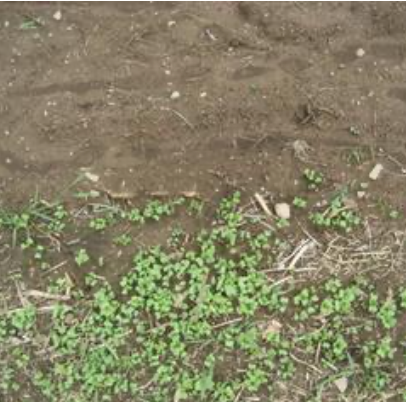
Some Seeds Save Themselves
Sometimes I’m asked which type of seed is my favorite to save. I love to winnow zinnias in the wind letting the breeze naturally select and discard the chaff. I also enjoy the piñata party-like exuberance of threshing brassica pods with a stick. But most of all I like the seeds that save themselves. I have a real admiration for the seeds that don’t need me. Those food plants that have preserved their ability to reproduce without the need for meddling humans are tenacious, crafty, and give me hope. They give me hope that no matter what agriculture giants, profit motivated biotech corporations, and misguided government bills do to recklessly promote mono-crop agriculture practices and breed or genetically modify seeds that can’t be saved, there will always be some open-pollinated dill or mache growing free in someone’s garden. There will be side yards and road gullies with escaped amaranth and spicy mustard. And there will be the spring surprise of self-sown seed.
This week we were preparing new beds. We were trying to keep them straight and level, but two of the rows are going to have to veer off course to avoid two oblong areas in the middle of the field. Last year’s Rat’s Tail Radish, which we had grown for the first time, had self-seeded. As inconvenient as it might seem, I’m keeping the seedlings right where they are. They survived a harsh winter, early heat wave, and the other night’s light frost. I’m not going to mess with something that tough. In my mind the podding radish is living up to its name-sake; the ever industrious, self-sufficient, adaptable and adorable rat. Yes, adorable. I know many of the urban dwellers who have bought our seeds may not agree, but Ayumi Horie’s sweet image on our Art Pack that depicts a connected plant and a rat sums up my adoration of both her pottery and the plant.
Some other seeds saved themselves this year. Arugula, cilantro, thyme, oregano, lettuce, and scorzonera have all earned squatter’s rights even though they are not rooted quite where I would have liked. I’m giving them some respect and letting them stake out their own turf. I’ll have to thin them out a bit and get creative with the normally straight rows of single heirloom varieties that were supposed to go there. But that’s good advice for any gardener. Be willing to get creative. Not everything will always fit exactly into your plan. That’s the way nature works and you are working with nature. Seed- saving is no different.
We have much to learn from the self-sowers. No one harvested these seeds at the perfect moment, dried them under ideal conditions, stored them in absolutely air tight containers in a dry cool place and coddled them into growth the next year. In most likelihood, our seed saving ancestors learned from the plants and saved seeds any way they could over the last 12,000 years. As you begin your garden with the full circle vision of a seed saver, be willing to experiment, be brave, don’t stress, and be open to learning from the plants. Just choosing a few plants to observe; letting them go through their entire life cycle, will teach you volumes.
Instead of sending out too many emails, I’ll be posting seed saving tips all season long online on Garden Notes for Seedy Folks and Doug will be keeping you up to date with the goings on at Seedy Farm. To find out about our seed-saving events and workshops sign up for our email list. You can also follow us on Twitter and RSS.
Thanks for getting seedy with us,
Ken






